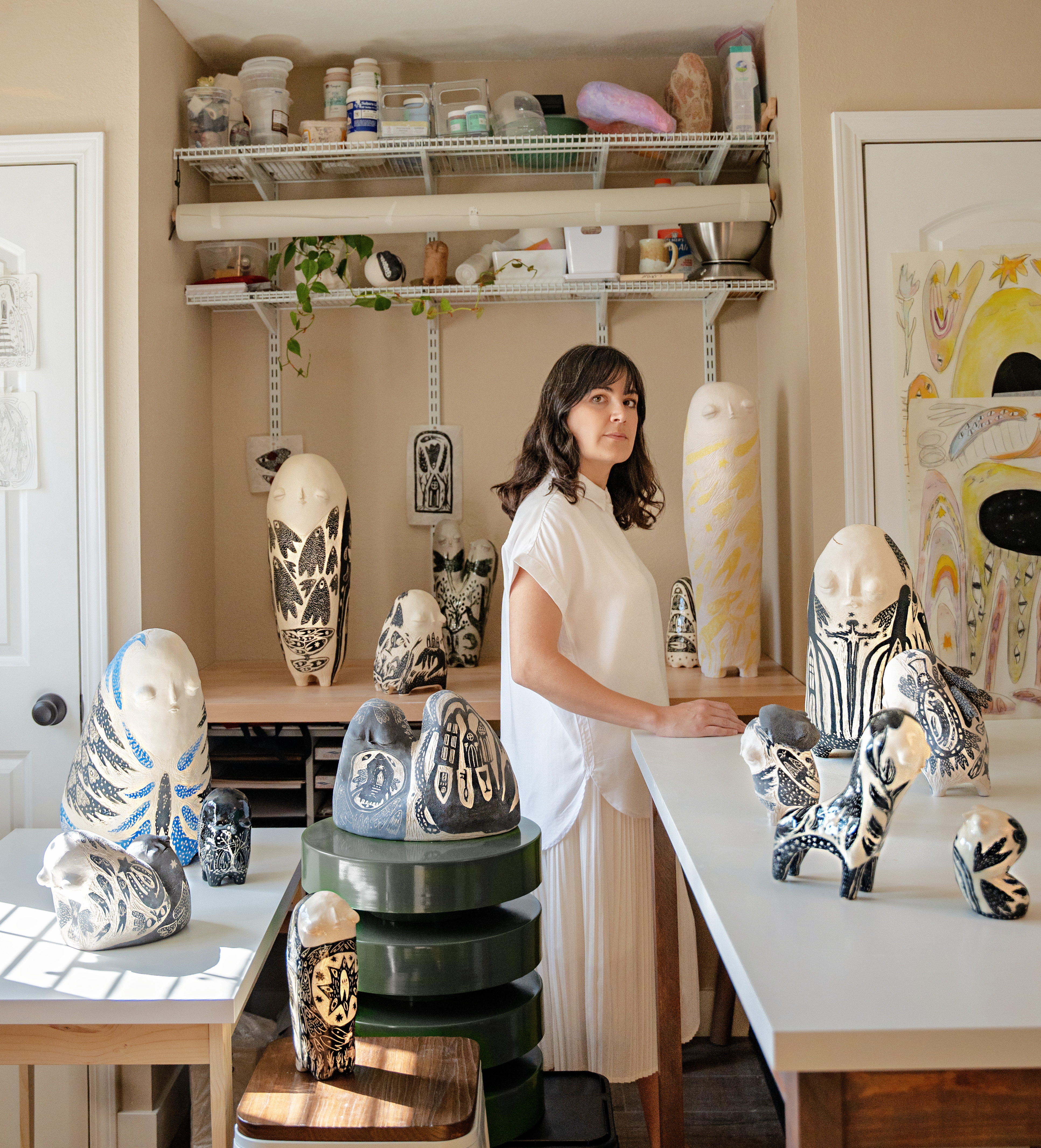
18 Aug Artist Interview: Carolyn Saylor

Your recent sculptural series, This is Not the End, reflects deep spiritual themes and addresses the anxieties stemming from apocalyptic events. Could you share more about the inspiration behind this series and how your personal experiences shaped these creations?
2020 marked by the COVID-19 pandemic was filled with so much public and private suffering. Right in the middle of it, tragedy hit my own family — a massive heart attack for my dad. I was thrust into a state of turmoil I was not prepared for. His miraculous recovery was agonizing but incredible. Still, the aftermath left us in an open sea of grief and loss. He was with us, but was he? Severe memory loss, the inability to form new memories, and disability became our new reality. It was joined by painful uncertainty: would Dad ever remember things like our father daughter dance at my wedding (he doesn’t yet), my brother’s wife’s name (often he does!), or recognize me when I begin to age?
In those days my world certainly felt like it was ending. I started to have panic attacks, fearing that vague “bad things” would happen. I didn’t want to live like that. Raised in a church-going family, I always considered my faith important, but it had never been challenged by true hardship until then. In my search for relief, I found deep comfort, not in the construct of religion, but in a genuine belief in God as a real, supernatural higher power that loved me and would care for me in my suffering. I wanted to understand what it truly meant that God could care for me in this life. What did that look like? What did I believe I had available to me? I became really curious about the idea of angels and their jobs. Were guardian angels more than just a comforting concept to parents of new drivers? I started to imagine guardian entities and how they might appear. When panic would creep in, I envisioned many-winged figures, often depicted in my current work, strung together like a mantle wrapped around me protectively. I imagined larger guardians, curled up like a celestial watchdog at the foot of my bed or standing as a protective dome over my house.
Even though I was beginning to hone my interpretation of a supernatural world, the artistic crossover wasn’t there yet. These visualizations hadn’t made their way onto my sculptures—it was just something I was using as a way to explore my faith and find comfort. There were two pivotal moments that solidified the style you see in This is Not the End. I’m reminded of the famous description of poet Ruth Stone’s creative process. She would feel a poem barreling toward her, shaking the earth, and run home as fast as she could to capture it with pencil and paper before it passed her by. While my experience wasn’t as dramatic as Ruth Stone’s, I did have my own unexplainable, sudden download. I saw an image, like a vision, in my mind’s eye and immediately felt compelled to sketch it—a multi-armed winged figure sheltering little red houses. I ran to show my husband, exclaiming, “THIS IS IMPORTANT! This is going to be really important!” That drawing was like a key that unlocked everything you see in this series. I feel like I stepped into a new world that’s still expanding, and I’m only at the beginning of exploring it.
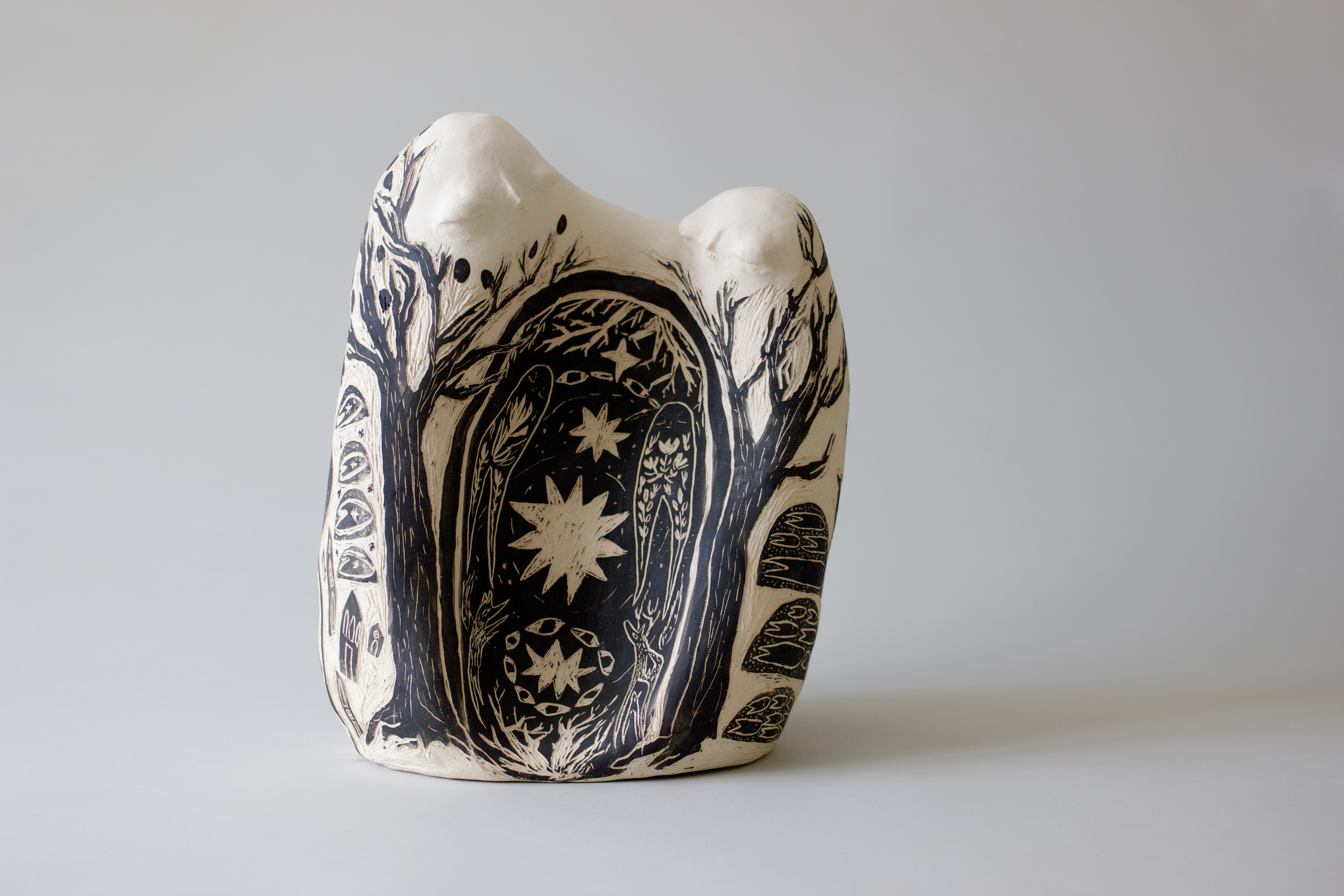
The sculptures in This is Not the End feature subtle, evocative facial expressions and a unique visual vocabulary. How do you approach the process of creating these expressions, and what do you hope they convey to the viewers?
Even before my art expanded to include sculptural forms, capturing specific facial expressions in my 2D work was a favorite part of my process. I love how a subtle quirk of a mouth or tilt of an eye can completely transform the tone of a piece. My first experience with this in 3D came when I sculpted acorns with old man faces to fill some empty acorn caps I’d collected. As each unique face emerged, I found myself wondering, “Who is this? Where are these coming from?” I became so enchanted by their individuality and sense of personhood, that I began adding faces to all my sculptures, excited to see who would appear next.
In my current work, once the initial form is complete, I assess the body language—whether the figure is leaning to one side, looking down, or looking up. I experiment with rough balls of clay until I find a harmonious placement that complements the curves of the figure. It’s important to me that the faces avoid becoming uncanny, so the features are stylized and simplified. The mouth is the trickiest but most important part. It needs to come together in just a few gestures to not become overworked. I often scrape the mouth off and begin again, maybe 3 or 4 times to get it right. I never have a certain expression in mind, but am waiting for a feeling when I sense it looks genuine and harmonious with the rest of the form.
I hope viewers feel an affinity with my pieces, as if they could come to life at any moment. I want them to feel invited to look closely, with the expressions and closed eyes offering permission to be a welcome observer, not a voyeur. People interpret the figures’ expressions in various ways—sleepy, peaceful, calm, sometimes sad. Even when the subject matter suggests fearsome events, the expressions are never reflecting despair or pain. My hope is that they convey a sense of steadfastness that encourages and uplifts the audience.
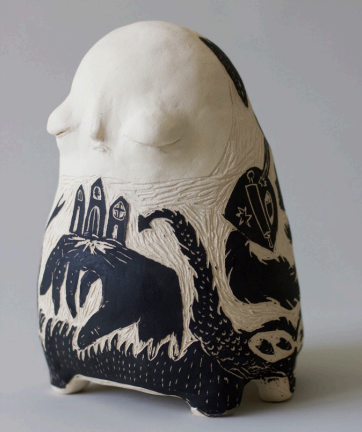
You have mentioned envisioning your sculptures at a colossal scale, guarding and protecting. Can you expand on this concept and discuss how the idea of protection and guardianship plays into your overall artistic vision?
When I began to explore what people think about angelic figures, a recurring detail was their otherworldly size. For me, imagining something that big interacting with the world is both terrifying and awe-inspiring. This led me to think about the small creatures we share our reality with. Do ants regard us as living beings, or just part of the scenery? Can a snail comprehend being moved from the sidewalk to safety by a benevolent force? Similarly, are there entities protecting us we can’t see because we can’t understand them? And if there are, what are they like?
The ideas of guardianship and protection suggest a relationship and not being alone: two important concepts in my work. Even though the figures’ eyes are closed, their body language and feature placement imply interaction—perhaps with the viewer, a companion figure, or something unseen. There is always an implied second presence.
In the future I would love to bring one of my sculptures to life as a public installation, maybe as inflatable art that can be walked under, a large structure for climbing, or an acoustic meditative space to crawl within. I would love for the audience to have a chance to experience these forms in physical space the way I first imagined them.
Your work touches on themes of faith and the presence of forces beyond our senses. How do these themes influence your creative process, and how do you see your art contributing to the broader conversation on spirituality and the unknown?
Faith and the idea of unseen forces heavily influence my process. Outside of my creative practice I often find myself indulging my preference for planning and control, but in my studio these strategies never serve me. The more I try to impose control over my work, the more diluted it becomes. I personally think art can be supernatural and that creativity might be one of the great arguments for the existence of divinity. I’ve had experiences stepping back from an intense session of working where I hardly recognize what I’ve done. It can feel that I barely had a hand in it at all—a baffling experience that, to my delight, allows me to often become part of the audience.
To ward against the creep of control and an over-addition of self in the work, I rarely plan or draw in advance, preferring to sculpt intuitively, or sometimes responding to a vision-like mental image. This very process is an act of faith every time—not knowing for sure if inspiration will meet me but stepping forward anyway. I use a carving method to reveal my illustrations which start as rough blobs on the surface of the sculpture. I’ve even downgraded to a purposefully bad brush for this initial roughing-in process to ensure I don’t get lost in the details too early. I strive to maintain a lot of self-discipline during the illustrating phase to keep myself in the right headspace. I don’t want any static on the line.
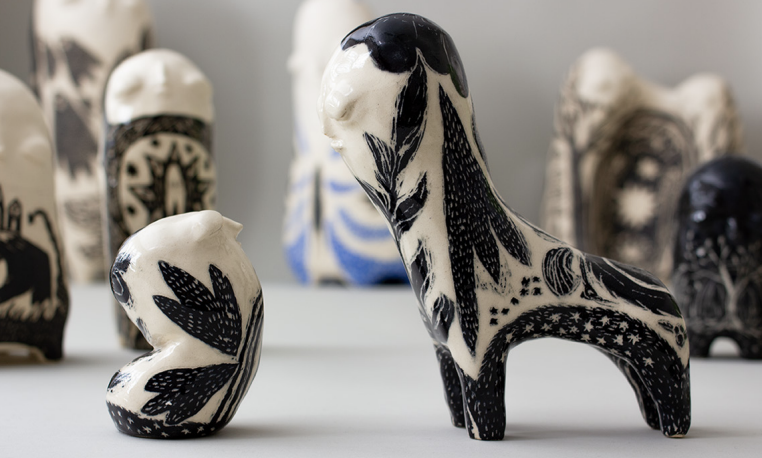
I hope my art contributes to the greater conversation of spirituality and the unknown by injecting a sense of wonder, mystery, and child-like curiosity into an often tense, impassioned space. Through my art, I hope to illuminate previously darkened corners in the attic of our consciousness, prompting people to think, “Wow! I didn’t know this was up here. What is it?” I would love my work to connect with spiritual explorers—making it possible for people to engage in meaningful discussions by giving them a physical object that helps them begin.
The title of your series, This is Not the End, suggests a message of hope and continuity. How do you balance conveying both the fear and the hope within your work, and what do you want your audience to take away from this duality?
I hope the audience will take away that fear is what makes hope powerful. That to me is the magic of Fearless Girl standing in front of Charging Bull on Wall Street, why the tale of David and Goliath persists, and the reason long-dead musicians still grip our heartstrings for choosing to play as the Titanic went down. The balance is so important: too much fear, and we give up; not enough, and we become complacent and don’t act. I’m mindful that these strong emotions can be used to manipulate, so it’s never my intention to lead the audience to a certain feeling, or orchestrate a premeditated balance between these concepts in my pieces. Instead, I try to acknowledge fear and hope in a truthful way — that they coexist, but are rarely equal and often in flux.
If my audience is like me, we may share the fear that we will suffer, but we may also share the hope that it won’t be for nothing. In context of the series: I hope the audience will wonder if there may be an eternal part of us that won’t die. This to me brings up interesting unknowns; if that part exists where will it go? What will it see ? Will we remember where we’ve been? What will it be like? How do we even talk about these things? These are the questions I try to address with my illustrations. Not to provide answers, but to wonder about them in a different language, a visual one, when words can’t quite cut it.
Your piece This Too Shall Pass is currently on display at the Irvine Fine Arts Center as part of the All Media 2024 exhibition. How does this piece fit within the broader narrative of your series, and what significance does it hold for you personally in the context of this show?
This Too Shall Pass, one of the final pieces created in the series, also serves as its narrative conclusion. It aggregates the single events, ideas and feelings of the other pieces, and offers the viewer a narrative climax. There is tension between the illustrations: something is about to unfold, but the viewer doesn’t quite know what. For me, this creates a feeling of curious yet uneasy anticipation—a waiting that reflects the uncertainty I observe our society feeling about our relationships with each other, our planet, and our future.
While most of the series depicts some kind of transition, This Too Shall Pass claims it boldly in both title and content: that this life and this world are ending. Whether it’s the natural death we will experience as humans, a planetary extinction event, or a supernatural apocalypse, it’s certain. But then comes the question I’m always asking: What happens next?
I am thrilled and honored to have This Too Shall Pass featured in All Media 2024. Sharing my work publicly for the first time, especially with my immediate community, is both humbling and gratifying. To see people lean in, point, and discuss my piece with their companions filled me with gratitude and is my ultimate goal as an artist. I can’t help but wonder what they were saying, how they were interpreting what they saw. That, I believe, is at the heart of the annual All Media show: to connect, celebrate, and spark conversation. It’s truly an honor to have something I created take on a life of its own and contribute to that collective experience. I’m very grateful.
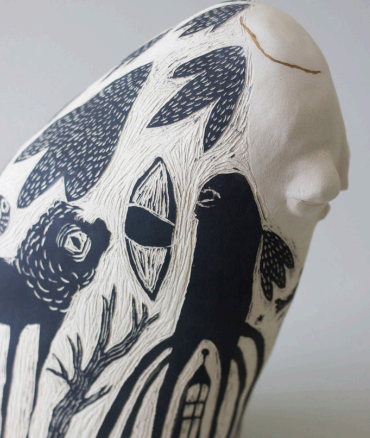
How can people find you and see more of your work?
People can find me and see more of my work on my instagram @cgsaylorart, and on my website: www.carolynsaylorart.com



Sorry, the comment form is closed at this time.